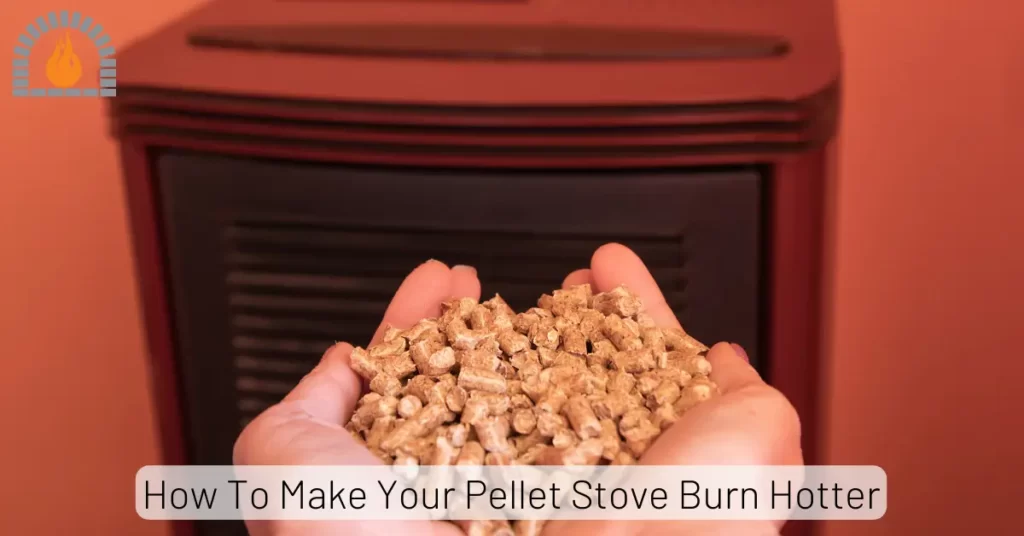Pellet stoves have become a popular heating option for homeowners due to their efficiency, cost-effectiveness, and environmental benefits. However, one common question arises: What size pellet stove do I need?
Choosing the right size isn’t just about selecting a stove that fits your space it’s about ensuring your home stays cozy without wasting energy. In this guide, we’ll break down everything you need to know to find the perfect pellet stove size for your home.
Overview Chart for Selecting the Perfect Pellet Stove Based on Space
| Square Footage | BTUs Needed (Average Insulation) | Warm Climate (25 BTUs) | Moderate Climate (35 BTUs) | Cold Climate (50 BTUs) |
|---|---|---|---|---|
| 300 sq. ft. | 10,500 BTUs | 7,500 BTUs | 10,500 BTUs | 15,000 BTUs |
| 500 sq. ft. | 17,500 BTUs | 12,500 BTUs | 17,500 BTUs | 25,000 BTUs |
| 1,000 sq. ft. | 35,000 BTUs | 25,000 BTUs | 35,000 BTUs | 50,000 BTUs |
| 1,500 sq. ft. | 52,500 BTUs | 37,500 BTUs | 52,500 BTUs | 75,000 BTUs |
What is BTU and Why is it Important?
When shopping for a pellet stove, you’ll often come across the term BTU, or British Thermal Unit. This measurement indicates how much heat the stove can produce.
Pellet stoves typically range from 8,000 BTUs for small spaces to over 50,000 BTUs for larger homes.
Knowing your required BTU is crucial to ensuring the stove meets your heating needs without consuming excess fuel.
What Size Pellet Stove Do I Need?
The general rule of thumb for selecting the right pellet stove size is to calculate approximately 5,000 British Thermal Units (BTUs) for every 200 square feet of living space.
How ever to determine the appropriate size of a pellet stove for your home, several factors must be considered, including the area you want to heat, insulation quality, and room dimensions.
How to Calculate the Right Pellet Stove Size
To determine the ideal pellet stove BTU output you need:
- Measure the square footage of the room or area.
- Multiply the square footage by a BTU factor based on your insulation and climate:
- Poor insulation: 50 BTUs per square foot.
- Average insulation: 35 BTUs per square foot.
- Good insulation: 25 BTUs per square foot.
For example, a 1,000-square-foot room with average insulation requires approximately 35,000 BTUs (1,000 × 35).
Factors to Consider When Choosing Pellet Stove Size
Room Size and Heat Requirement
The size of the room or area you want to heat is a primary factor in selecting a pellet stove. As a rule of thumb:
-
A small room (~300 square feet)
-
A medium room (500–1,000 square feet)
-
A large space (1,500 square feet or more)
If your ceilings are higher than the standard 8 feet, you’ll need additional BTUs to compensate for the increased air volume.
Insulation and Climate
Insulation plays a significant role in retaining heat. Poorly insulated homes or those in colder climates may require a stove with a higher BTU output.
Conversely, well-insulated homes in milder climates can opt for lower BTU stoves.
Stove Placement and Layout
Where you place your pellet stove impacts how evenly heat is distributed.
A centrally located stove in an open floor plan will heat more efficiently than one placed in a corner of a partitioned home.
Tips for Maximizing Pellet Stove Efficiency
Regular maintenance, such as cleaning the hopper and removing ash, ensures your stove operates at peak efficiency. Neglecting these tasks can reduce heat output and increase fuel consumption.
High-quality pellets produce more heat and burn cleaner than low-grade alternatives. Always store pellets in a dry area to prevent moisture absorption, which can decrease their efficiency.
Common Mistakes to Avoid
Choosing a stove that’s too large can lead to overheating and wasted energy, while an undersized stove may struggle to heat your space effectively.
Ignoring factors like insulation, layout, and climate can result in an inefficient heating system.
FAQs
Can a small pellet stove heat a large room?
No, a small stove won’t generate enough heat for large spaces, especially in colder climates.
How does pellet quality affect heating efficiency?
High-quality pellets burn hotter and cleaner, improving stove performance.
Are pellet stoves suitable for all climates?
Yes, but colder climates may require higher BTU stoves for adequate heating.
Can I use a pellet stove as a primary heating source?
Yes, in well-insulated homes, pellet stoves can serve as the primary heat source.
What maintenance is required for peak performance?
Regular cleaning, inspecting the hopper, and ensuring proper venting are crucial.
Affiliate Disclosure: Fireplaceadviser.com is a participant in the Amazon Services LLC Associates Program. We may earn a commission when you click on certain links on this site and purchase.

Hello!! I am Jamal Khan. I often fix my home electric heaters and gas stove problems and research the common issues in the heating units to improve my knowledge and expertise. The aim of establishing fireplaceadviser.com is to share my expertise and knowledge with my audience.

















